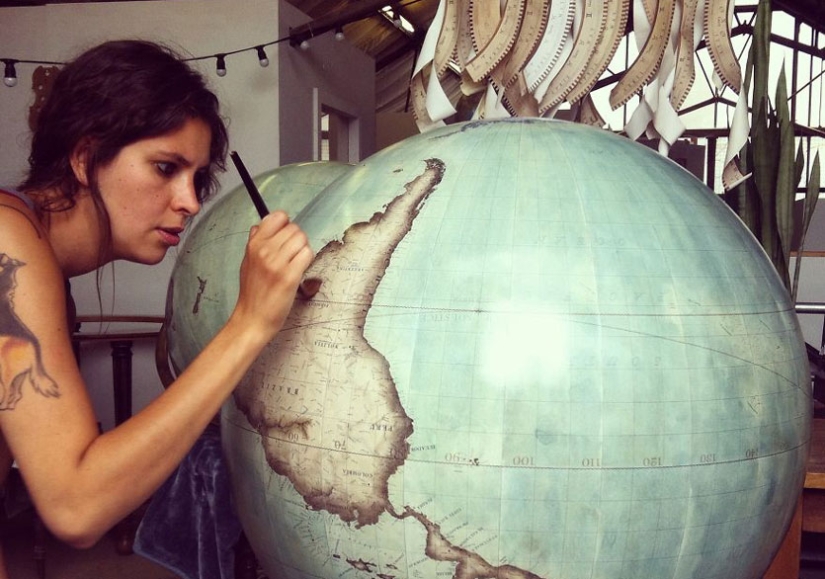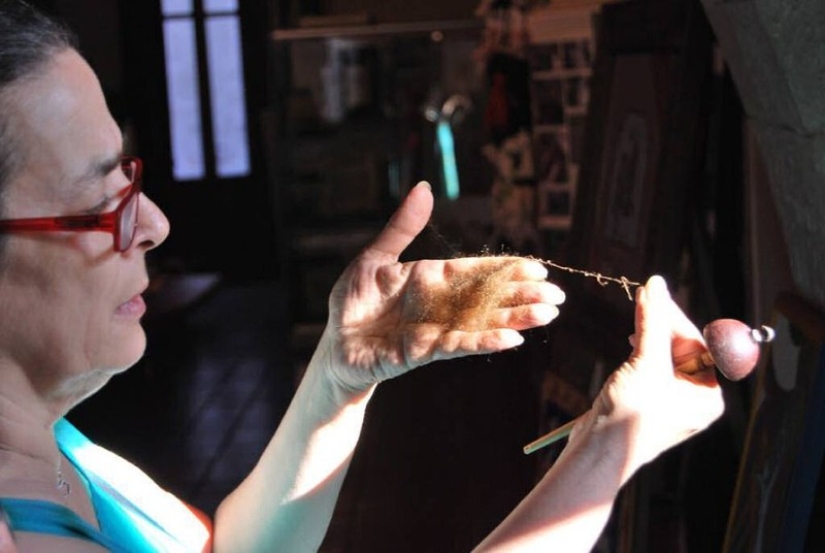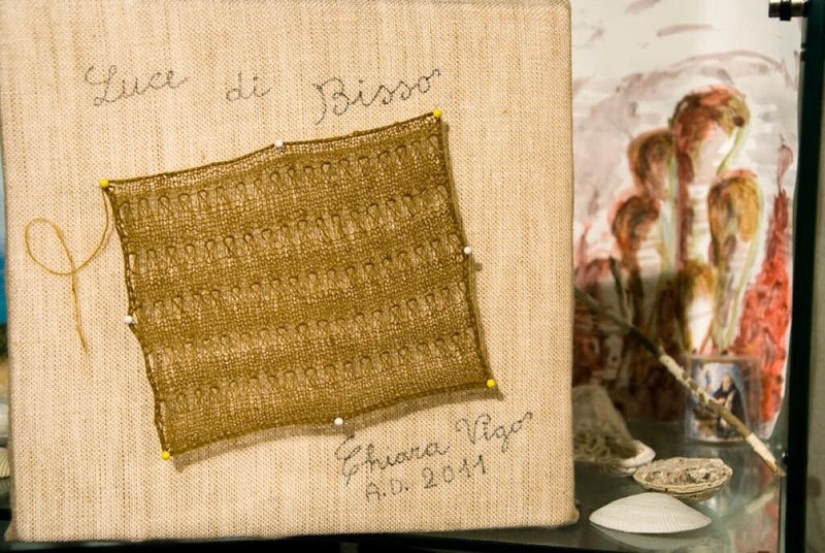Merciless time, or 10 disappearing things that remained in one copy
As you know, nothing lasts forever under the moon. And today there are things in the world that are left no less than one copy. In our review there are 10 items that may simply disappear from the face of the earth in the near future and will remain only in memories.


The ancient Italian art of spinning "visson" was actually lost. There is only one woman left who still knows how to make this thinnest rare fabric. Usually modern silk is spun from threads extracted from silkworm cocoons. Chiara Vigo collects the sticky secretions of shellfish and turns them into a shiny golden fabric, which was considered the best fabric in ancient Egypt, Ancient Greece and Ancient Rome.

If this material is processed properly using lemon juice and spices, then it literally shines in the sun. This fabric is also incredibly light and thin, like a spider web, and a person often does not even feel its touch on his skin. At the same time, visson is resistant to water, acids and alcohol.
Vigo collects the raw materials needed to weave the fabric every spring. She dives to a depth of 15 meters to collect the hardened saliva of large mollusks "pina nobiles", which are now endangered.
Vigo has mastered a special technique of cutting off these secretions, which allows her to separate the secretions of rare mollusks without killing them. For 300-400 dives, she manages to collect about 200 grams of material, which is enough for just one thing.
With the advent of GPS and the Internet, globes are becoming increasingly rare, and handmade globes have practically disappeared. Now only two studios in the whole world make modern handmade globes. One of them is London—based Bellerby & Co. Globemakers. The process of creating a globe is quite complicated and expensive, so prices for such globes start from $ 1,500. Each globe is made only by individual order and is essentially unique.
In the age of Internet technologies, digital printing and 24-hour news channels, few people buy printed newspapers anymore. But in India, a country known for its centuries—old traditions, still has a newspaper that is written by hand. Moreover, she has a whole 21 thousand subscribers.
In Chennai, the staff of the evening newspaper Musalman daily displays the latest news in perfect handwriting, which takes about three hours. After that, the newspaper is sent to the printing house. The only mistake leads to the fact that the entire page needs to be rewritten.
Sudan, the last male northern white rhino on earth, lived in Kenya and was guarded 24 hours a day. A young rhino was caught in the wild, after which he spent 35 years in a Czech zoo. Then Sudan was brought back to Kenya.
Unfortunately, in March 2018, veterinarians decided to euthanize a 45-year-old animal that suffered from age-related degenerative diseases. Before making the last injection, the doctors collected the genetic material of the animal. Scientists hope to save the species by using artificial insemination technology and transplanting a fertilized egg into the body of a female southern white rhino. After the death of Sudan, only two representatives of this species remained on Earth — his daughter Najin and granddaughter Fatu.
The British strategic bomber Avro Vulcan in 2012 saw the sky for the last time at an air show in London and Essex. The iconic Cold War aircraft was removed from regular flights at the end of 2015 for safety reasons (after all, it has been in operation since 1956). Another Vulcan bomber is on display at the RAF Museum, and another was restored by volunteers at Southend Airport.
Ernest Wright and Son Limited is the last factory in the world that still makes scissors by hand. In 2014, it was on the verge of closing, but a video shot by Sean Bloodworth, which showed the process of assembling scissors by hand, suddenly gained huge popularity. The number of orders increased dramatically, and the factory, which has existed since 1902, survived.
PS Waverley is the world's last marine passenger paddle steamer that is on the move. It was built in 1946 and operated regular flights until 1973. After the ship was decommissioned, it was purchased by the Society for the Protection of Wheeled Steamers for 1 pound, after which it was restored.
Cable car in San Francisco is the world's last manual cable car. Of the 23 lines built between 1873 and 1890, only three are now functioning. They are among the most significant tourist attractions in the city along with Alcatraz Island, the Golden Gate Bridge and the Fishing Harbor.
Bedford SB3 Mobile Cinema
Any camper in the world just pales in comparison with the Bedford SB3 Mobile Cinema. The streamlined British cinema bus is the only one remaining at the moment out of seven built by the British Ministry of Technology in the late 1960s. This bus and its six brothers traveled all over the UK so that engineers, industrial designers and other specialists could see films about modern production methods.
In 1974, all mobile cinemas were decommissioned, except for one, which mysteriously disappeared. The current owners found this Bedford SB3 in a deplorable condition, after which they completely restored it, and also installed a new transmission and modern heating and air conditioning systems. In March 2015, the mobile cinema was sold via eBay.
71-year—old engineer Jinichi Kawakami is the last true ninja in Japan. He is the 21st head of a clan in which all children have been taught the art of ninjutsu for 500 years. And, according to him, there will never be a 22nd chapter. An elderly ninja claims that he is the last living person who has learned all the skills used by the spies and assassins of feudal Japan.
Kawakami has been trained for decades to hear a needle drop in the next room, disappear in a cloud of smoke and cut the throat of a victim with 20 steps with a 5-centimeter shuriken. Unfortunately, Kawakami decided that the ancient art should die with him, because the concept of ninja "just doesn't fit with today."
